For Enquiry Dial 90-350-37-886
Software Testing
Training With Placement
- Globally Recognized Certificate
- Real Time Live Training sessions
- Corporate Trainers with 10+ Years Industry Experience
- Hands On Exposure on Real Time Projects
- Resume and Interview Preparation
- Get 100% Guaranteed Job Support
- Join for Internship Programs and get exposure to work on Industry Projects
- 3 Months Job support after completion of training
- Both Online and Offline trainings available
Why Ascent Software for Software Testing Training ?
- Our Software Testing syllabus covers all the latest concepts as per corporate trainings
- Advance topics such as Jenkins, GITHUB, RESTFul Services, Maven etc are covered in-depth
- The training is more of practical than theoretical with one on one mentorship
- We keep limited batch size for full trainer attention
- Rich Study Material & handouts for reference
- Assignments are included for each topic
Who Can Do This Course ?
- Software Testing training can be done by Freshers, Job Seekers and Working Professionals
- No prior prerequisite is required to learn Software Testing
- The course is strategically designed to suffice the requirement of current industry requirements
- Freshers will find the course easy to understand as every inch of basic knowledge is covered in it
- Experience people who are willing to learn new technologies will find the course very interesting as all topics are elaborated with live examples and real time assignments
Training Methodology

Software Testing Training - Syllabus
Best-in-industry, strategically designed Course Content, Projects, Class Sessions to
accomplish the changing requirement of market
- Introduction to Software Testing
- SDLC Phases and Deliverables
- SDLC Models
- Waterfall model
- Spiral Model
- Prototype Model
- Rapid application development model
- Iterative and Incremental development model
- Agile Model
- Software Engineering
- Software Process and benefits
- SEI CMMI Levels
Level1 – Performed
Level2 – Managed
Level3 – Defined
Level4 – Quantitatively Managed
Level5 – Optimizing
- Software Configuration Management – VSS
- Purpose of SCM
- Advantages
- SCM process
- Version Control
- Configuration of VSS
- Navigation to VSS
- Directory Structure
- Check-Out files
- Check-in files
- SQA and SQC
- Verification and Validation
- Testing Roles and Responsibilities
- Software Test Engineer
- Senior Software Test Engineer
- Test Lead
- Test Manager
- Testing terminology
Module Outcome
After completion of module1, candidates will be well versed in CMMI Levels, Software processes and methodologies followed in organizations.
- Project Management plan
- Requirements Specification
- Business requirement specification
- Software requirement specification
- Functional requirement specification
- Requirement Change Management
- Testing Life Cycle
- Test Plan
- Entry criteria
- Test Scenario template
- Test Scenarios Identification
- Test Cases
- Entry Criteria
- Good Test case Design
- Test Case Design Techniques
- Equivalence Class Partitioning
- Boundary Value Analysis
- White box Testing Techniques
- Guidelines for web testing
- Functionality
- Usability
- User Interface
- Compatibility
- Security
- Server Log Files
- Practical Checklist
- Working Structure
Module Outcome
After completion of module 2, candidates will have hands on exposure to Preparing Test plan, test Scenarios and test Cases for Live Projects
- Project/ Product
- Types of projects
- Desktop applications
- Web applications
- System products
- MVC Architectures
- 1-tier Architecture
- 2-tier Architecture
- 3-tier Architecture
- n-tier Architecture
- About technologies
- Java and .Net
- Java Environment for Web Applications
- .Net Environment for Web Applications
- Servers
- Web Servers
- Application Servers
- Remote Servers
- VPN Servers
- Putty commands
- Build Deployment
- Architecture of project
Module Outcome
After completion of module 3, candidates understand the Project Testing Environment
- Builds from Development to Testing
- Build Release Note
- Text cases Execution
- Defect Management
- Tool Installation and Configuration
- Creating user roles
- Permissions for each role
- Creating Users
- Defects Reporting Guidelines
- Defects reporting
- Defects Tracking
- Defects Retesting
- Reports generation
- Defects Closing
- Severity levels
- Priority levels
- Status Reports
- Daily status report
- Daily defect report
- Weekly status report
- Retesting report
- Defects in real time applications
- Defect life cycle
- Retesting
- Regression testing
- Project Builds Workflow
- Testing Strategy
- Testing Process
- Requirements Traceability Matrix
- Database Testing using Toad
- Database basics
- DBMS/RDBMS
- SQL Basics
- Projection
- SQL Mantra
- Entry criteria for DB Testing
- What to check in DB Testing
- Navigation to Toad
- Database Verification
- Database Checklist Template
- Test Closure
- Exit Criteria for Testing
- Introduction to User Scenarios
- Sample SQA Reports
- Outlook to configuration and navigation
- Resume preparation
- Guidance to apply Testing jobs
- Written test
- What is automation testing?
- What is the use of automation testing?
- What we need to Automate?
- What is Selenium?
- Advantages of Selenium
- What is the difference between Selenium and QTP?
Different flavors in Selenium
- IDE
- Selenium Web Driver/Selenium 2.0
Selenium-Grid
- Installing Selenium IDE
- Selenium IDE icons
- Recording your first test with Selenium IDE
- IDE Context Menu
- Assert
- Verify
- Adding Selenium IDE comments
- Synchronization commands
- Working on pages with AJAX
- Storing elements
- Creating test suites
- What you cannot record
- Tools to identify elements/objects
- Firebug
- IE Developer tools
- Google Chrome Developer tools
- Locating elements by ID
- Finding elements by name
- Finding elements by link text
- Finding elements by XPath
- Finding Elements by using CSS
- Summary
- Some Special IDE commands
- Write your own Selenium IDE script without record and playback
- Introducing the JAVA technology:
- Relating Java with other languages
- Showing how to download, install, and configure the Java environment on a Windows system
- Key features of the technology and advantages of using Java
- Java Features
- Write Simple Java Program
- Compile and Run the class files
- Java Programming format
- Java Keywords
- Java Data Types
- Declarations and Access Control
- Operators and Assignments
- Flow Control
- Typecasting
- Arrays
- Packages:
- Introduction to all predefined packages
- User Defined Packages
- Access Specifiers
- Object Oriented Programming Concepts:
- Introduction
- Class
- Object
- Local, Instance and static variables
- Constructors
- This keyword
- Inheritance and Types
- Working with super classes and subclasses
- Using types of polymorphism such as overloading, overriding, and dynamic binding
- Abstraction
- Encapsulation
- Abstract classes
- Interfaces
- String Processing:
- String manipulation with String Builder and String Buffer
- Essential String Methods
- Exceptions and Assertions:
- Introduction
- Exceptions categories
- Standard Java Exception classes
- Using Try-catch and finally clause
- I/O Streams:
- I/O using Java
- Files (Create/Read/Write operations on files)
- Wrapper Classes:
- Introduction
- Byte, Short, Integer, Long
- Float, Double
- Character
- Boolean classes
- Collections:
- Introduction to Collections framework
- util Package
- List, Set and Map
- Difference of All Collections Interfaces and classes
- Reading data from Property files using java program
- Reading and Writing data from/to Excel files using Apache POI API and JXL API
- Running Java Programs using Junit
- Writing Selenium tests from scratch using Junit Framework
- JUNIT Annotations
- JUNIT Methods
- Frequently used Selenium commands
- Test Suites using JUNIT
- Parameterized test cases using Junit framework
- Running Java Programs using Junit
- Writing Selenium tests from scratch using Junit Framework
- JUNIT Annotations
- JUNIT Methods
- Frequently used Selenium commands
- Test Suites using JUNIT
- Parameterized test cases using Junit framework
- Why WebDriver?
- Downloading web driver Jars configuring in eclipse
- Architecture of selenium WebDriver
- Drivers for Firefox, IE, Chrome, iPhone, Android etc.
- What is the difference between Selenium RC and WD?
- Handel Text box
- Handel Hyperlink
- Handel Button and Check box
- Handel Radio Button and Dropdown Controls
- Select value from Dropdown
- Display all values
- Select values step by step
- Capture screenshots
- Synchronization Commands In Web Driver
- Why Implicit wait and Implementation of Implicit wait
- Why Explicit wait and Implementation of Explicit wait
- Web Driver Fluent wait and Thread Sleep functionality
- File uploads and File downloads (Handling Window based controls using Robot and Saluki API)
- Handling alerts box and verifying the Alert Texts
- Handling confirmation messages
- Keyboard actions
- Mouse actions
- Handling Iframes working with Nested Iframes
- Handling multiple tabs
- Handling popups
- Preparing web driver test cases using customized x-path
- Identifying controls using x-path predefined functions
- Web Tables
- What is Web Table
- Extracting data from web tables
- Examples on static and dynamic Web Tables
- Creating Reusable functions for Web Tables
- Web Driver with TEST NG Frame Work
- Batch Running Test cases using TestNG
- Validations and its usage in Automation test scripts
- Customized Report Generation
- Implementing Logs using Apache Log4j API
- Executing Automation Test Cases in multiple browsers Sequentially
- Working with Chrome and IE browsers
- What is Firefox Profile And Implementation of Firefox Profile
- What is WebDriver Desired Capabilities class
- Executing Automation Test Cases in multiple browsers Parallel
- Introduction about maven
- High Level Overview
- Ant vs Maven
- Installation of Maven
- Demo using Sample Maven Project
- Maven Structure
- Introduction of Maven Folder Structure
- The pom.xml
- Dependencies
- Goals
- Local Reo Structure
- Defaults
- Sample Demo of Build Session of Maven Project
- Dependency version
- Versions
- Types
- Transitive Dependencies
- Scopes
- What is a Repository
- Dependency Repository
- Adding a Repository
- Plugin Repository
- Demo Installation
- Importing Projects
- Converting Existing Projects
- Pom Viewer
- Effective Pom
- Downloading and configuring GITHUB
- Difference between CVC Versus DVC
- Basic Git Commands
- Working with Repositories
- Setting up Repositories
- Local and Remote Repositories
- Create repository and cloning projects
- Committing and Syncing the code
- Reverting and Rolling Back the Code
- Branch and Merging Concepts and Implementation
- Stashing Changes
- Resolving the Conflicts
- Installing MySQL Database
- SQL package
- Overview on Connection Interface, Statement Interface, Prepared Statement and Result set Interfaces.
- Example program to Access Database.
- Some examples on SELECT,UPDTE and DELETE queries
- Some WebDriver examples using Data fetched from Database
How to develop Test automation frame work in live environment
- What is a frame work
- Types of frame work
- Data driven frame work
- Modular driven frame work
- Keyword driven frame work
- User Defined Keyword driven framework with implementation
- Execute test scripts from the framework
- About Jenkins
- History of Jenkins
- Splitting of Projects
- What is Continues Integration
- Installing Jenkins
- Creating a simple job
- Integrating Jenkins to the Project
- What is Jersey?
- RESTFul Architecture
- Using HTTP GET Demo
- Test Created New REST Service USING HTTP GET
- JSON Output for HTTP GET
- Using HTTP POST Demo
- Test Service USING HTTP POST
- JSON Output for HTTP POST
- Using HTTP PUT Demo
- Test Service USING HTTP PUT
- PUT vs POST
- JSON Output for HTTP PUT
- Using HTTP DELETE Demo
- Test Service USING HTTP DELETE
- JSON Output for HTTP DELETE
- Project Implementation using Manual and Selenium Testing
- FAQs & Interview Preparation
To Enquire for Placement Related Queries
CALL 9035037886
Learn At Home With Ascent Software
We provide same level of guidance in Online training as in classroom training. You can enquire anytime to get complete details about the courses. Our career counsellors are well trained in industry required technologies and placements.
#We are rated as "Best Online-Training Provider"
Highlights of Software Testing Training
SDLC Models, CMMI Levels, SCM
Selenium IDE, Locators & Object Identification
Automation Test Framework
Junit Framework, TestNG Framework
Java, Selenium Web Driver
Defect Management
& Status Reports
Maven Project Management Tool
GITHUB Tool, Database Testing
Database Testing using TOAD & SQA Reports
Jenkins, RESTFul Services in Java
Database Testing using TOAD & SQA Reports
Live Projects & Interview Preparation
Meet Our Industry Expert Trainers
# Certified Trainers
# 10+ Years of Industry Experience
# Study Materials Designed On Real Time Problems
# Excellent Communication
# Expert Interview Panel
# Corporate Trainings
# 10+ Years of Industry Experience
# Study Materials Designed On Real Time Problems
# Excellent Communication
# Expert Interview Panel
# Corporate Trainings

Call us: 080-4219-1321 hours: 8am-9pm
- course Duration
The focus is on In-Depth Practical Knowledge with a division of 30% Theory and 70% Practical sessions. Weekdays and weekend batches are available.
- Certified Trainers
We have best working professionals who are certified and have current industry knowledge to cater the needs of students.
- Placements
The program is focused to make a candidate get aware of industry requirement. Classes are followed with interview questions with are very important to crack an interview.
- Course Benefits
Covering up the course a person can easily crack an interview and can work on any real time projects as focus is more on practical training. An Industry Recognised Course Completion Certificate is a part of program.
- Course Highligts
Each topic is covered In-depth with Theory and Practical sessions. Training sessions are covered using Presentations followed by Assignments to enhance the knowledge of students.
- Internship programs
We have separate Internship Programs for Final Year students and Trainee Professionals which includes projects under Certified Trainer guidance . It also includes Internship Completion Certificate.

Internship Programs
- 6 Months Internship for Final - Year Students
- 3 Months Internship for First, Second and Third year students
- 6 Months Internship for BE, B.Tech, BSC and other students
- Internship for Working Professionals
- Internship Program to get hands on experience
- Internship Programe Certificate Issued
Our Hiring Partners For Placements
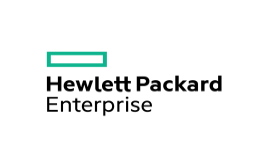
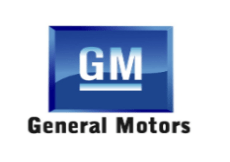
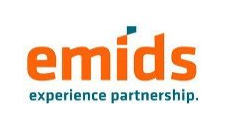
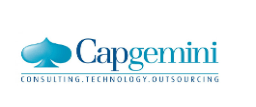


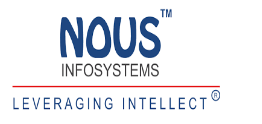



Software Testing - Batch Schedule
Mon-Fri | 8 AM to 10 AM | 12 AM to 2 PM
Sat- Sun | 8 AM to 10 AM | 12 AM to 2 PM
Mon-Fri | 6 PM to 8 PM | 7 PM to 9 PM
Need Different Timings ?
Enquire for Other Batch Timings
CALL : 9620983072 | 9035037886
Still Hunting For Job?
Ascent Software Certification is Accredited by all companies in the world
Get Certified
And Get Job with our Placement
Assistance Support
To Enquire for Placement Related Queries
CALL 9035037886
Power BI | UI Developer | Angular | Java | Data Science | React JS | Hadoop | Selenium Testing | Security Testing | Digital Marketing | Machine Learning | Microsoft SQL Server | Python| C | C++ | HTML, CSS |…View All Courses
FAQ
Most frequent questions and answers
Ascent Software provides all necessary modes of training
- Classroom Training
- Live Instructor LED Online Training
- One to One training
- Fast Track Training
- Customized Training
- Corporate Training
No worries. We at Ascent Software assures that a student should get full advantage of every session and if a class is missed that there is always a provision of backup class. We have different batches for the same course so the student is free to attend the same topic in any other batch within the stimulated course duration. If a student is unable to undersatnd certain topic then also the same process can be done.
A student can book a slot for free demo class as per his convenient timing. We have both classroom and online demo classes.
After completion of course a student will recieve globally recognized Ascent Software Training Institute Course Completion Certificate.
We accept all kinds of payment options. Cash, Card, NetBanking, Paytm, Google Pay, PhonePe etc.
You can call on 080-42191321 or you can enquire at hr@ascentcourses.com
Working hours
Monday - Saturday : 8:00-19:30 Hrs
(Phone until 20:30 Hrs)
Sunday - 8:00 -14:00
We are here
100 FT Ring Road, BTM 1st Stage, Bangalore-29
Phone: 080-42191321
Mob : 9035037886
Email: hr@ascentcourses.com

